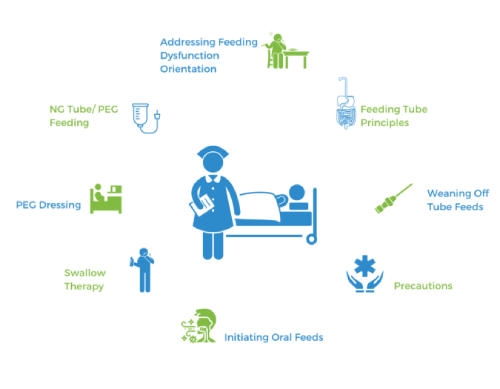What is Tube Feeding/Eternal Feed ?
Our body needs nutrition to stay strong and live a healthy life. If a patient is unable to eat, difficult to swallow or need nutritional supplementation when the intake by mouth is inadequate, tube feeding is advised to meet the nutritional requirement.
Tube feed is liquid form of nourishment delivered to your body through a specially designed flexible tube.
The nutrients within the feed are similar to what is available from normal food and also digested in the same way. The tube feed covers calories, protein, fat, fibers and all micronutrients required for the patient on daily basis.
The process of feeding through a tube is called gavage or enteral feeding. Depending on the need of tube feeding, it may be kept for weeks or months. The tube feeding is then gradually weaned off and the tube removed once the disease condition improves and patient is able to swallow adequate liquid or semisolid food.
In some cases, tube feeding may be required for a very long period or for life. Having a feeding tube means learning new skills and adopting new routines.

Types of Tube Feeds:
| Type of Tube | Where it is inserted | When it is used |
| Nasogastric Tube | Through the nose down the oesophagus into the stomach | Short term – 6 to 8 weeks |
| Naso jejunal Tube | Through the nose, down the oesophagus, down the stomach to small jejunum, part of small Intestine | When feeding into the stomach is not tolerated. |
| Gastrostomy Tube (*PEG/**RIG) | Directly into the stomach through a small stoma (opening) created by a surgical incision over the abdomen | Long term use, more than 6 months |
| Jejunostomy Tube | Directly into the jejunum through a small opening (Stoma) created by surgical incision on the abdomen. | Post surgeries of the stomach where stomach need rest to heal. |
*PEG: Percutaneous Endoscopic Gastrostomy
**RIG: Radiologically Inserted Gastrostomy
Indications Needing Tube Feed:
